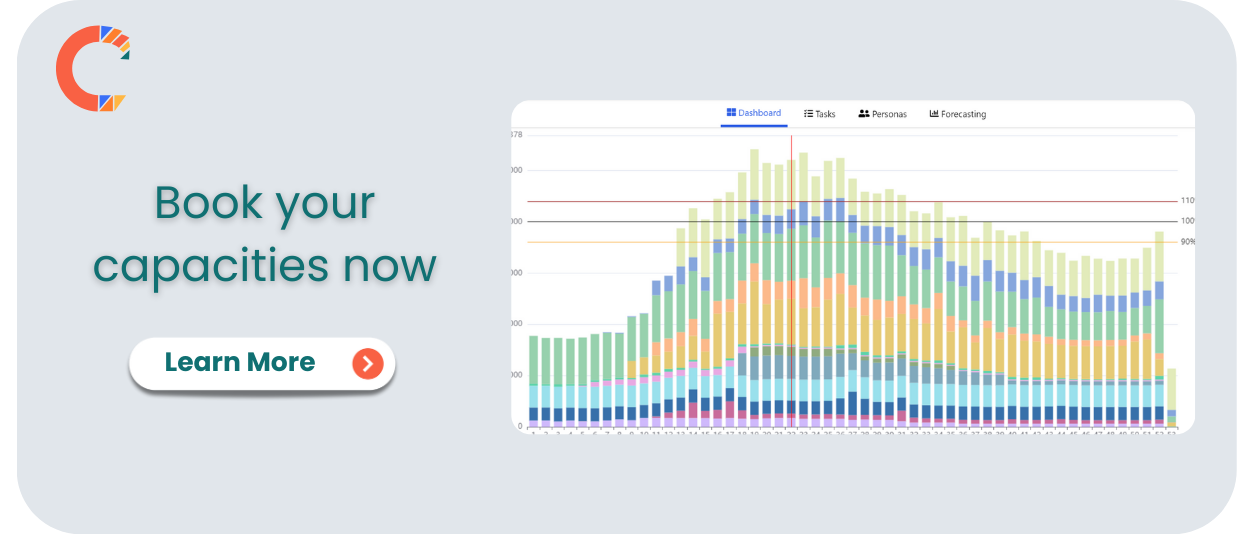Running several projects simultaneously is exciting, but can also become challenging. You think you have everything under control when suddenly - at the very last minute - you see your critical equipment or resources are unavailable. Now you are faced with a tough and immediate decision: fill the gaps by hiring or investing in new tools, stretch capacities and risk both projects or postpone project delivery.
This situation leaves you wondering: Could this situation have been avoided all along? How to prevent it from happening again?


Start with capacity planning
Capacity planning helps determine whether your resources can meet customer demand. It offers insights into upcoming workload and available capacities which help make informed project-related decisions. With this data, you can utilize your team - enough to keep them effective and productive without overloading them.
Capacity planning also makes it easier to identify capacity gaps and address them on time. In addition, you can easily spot “quiet periods” and take on new projects without stretching your resources too thin. Ultimately, capacity planning minimizes risk and reduces the likelihood of last-minute surprises.
While all capacity planning tools simplify these processes, CapaPlanner has also introduced a widget that allows you to book capacities in advance. This widget further helps to manage multiple projects simultaneously without delays and compromised quality.

How does the capacity booking widget work?
Your clients can check resource availability by simply entering their preferred dates and project details, then running a search. If resources are available, they can lock them right away. If not, the booking widget will provide alternative dates with available capacity, from which your clients can pick the one that fits best.


Benefits of capacity booking
Avoid overbooking: Make sure that some of the critical equipment or employees are not double-booked, but rather available at the right moment.
Increase client satisfaction: Ensure your capacities are locked ahead so you don’t risk delaying your projects or lowering the quality by extending resources beyond their capacity.

Have more control over your projects: Minimize the chances for last-minute changes to your capacity availability, which usually carry high budgetary implications. Instead, have more control over your project, including resources, duration and budget.



